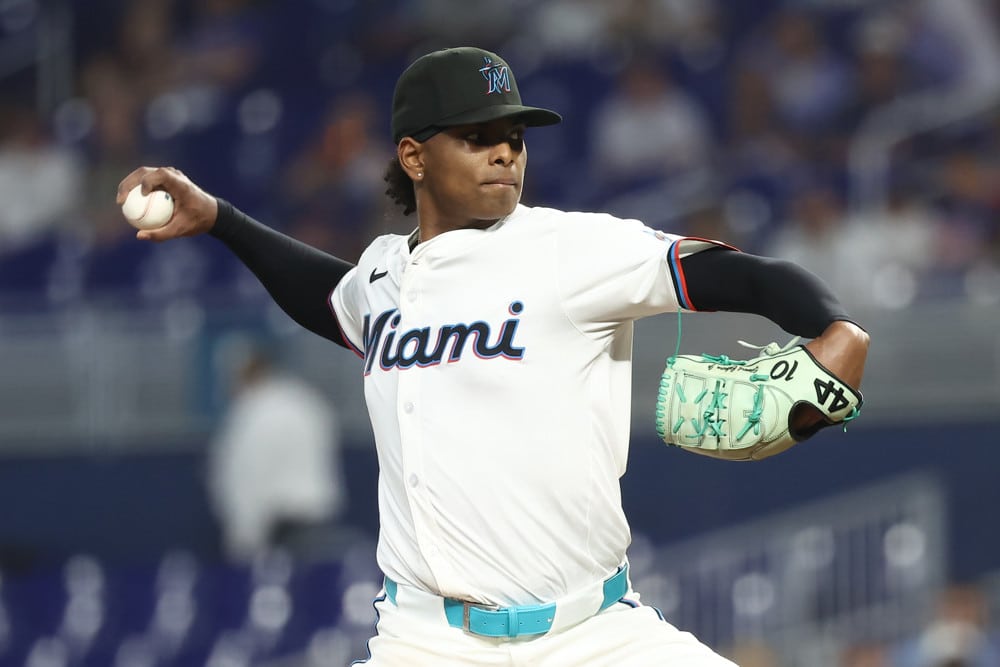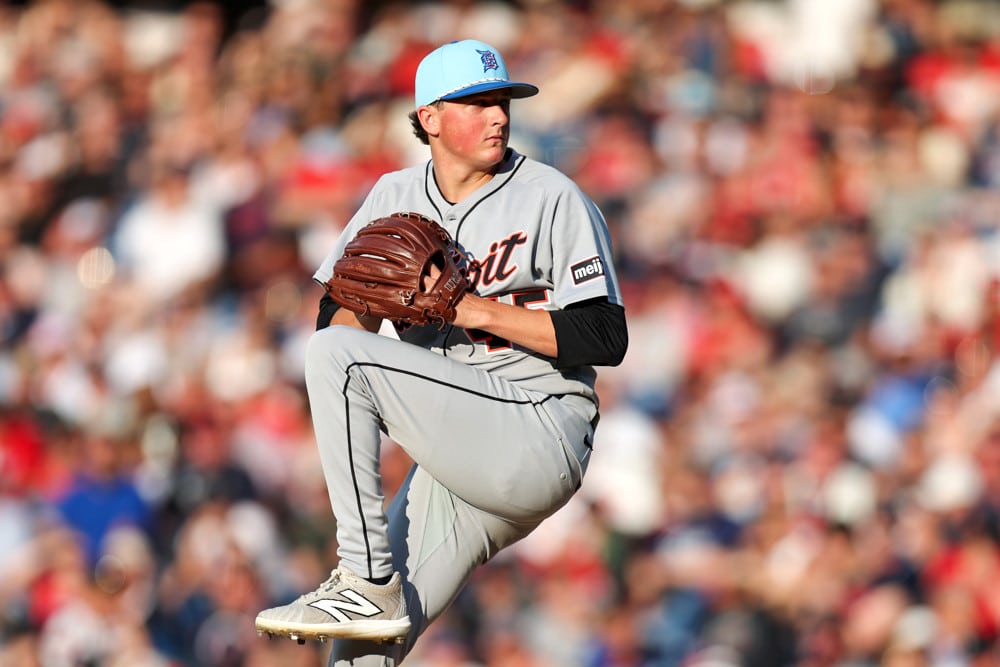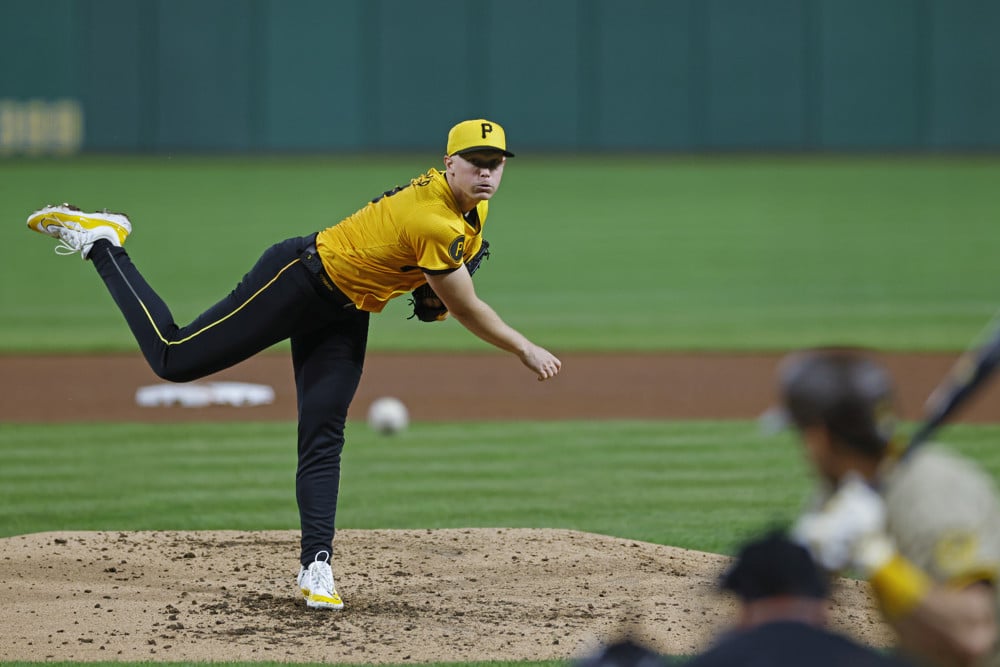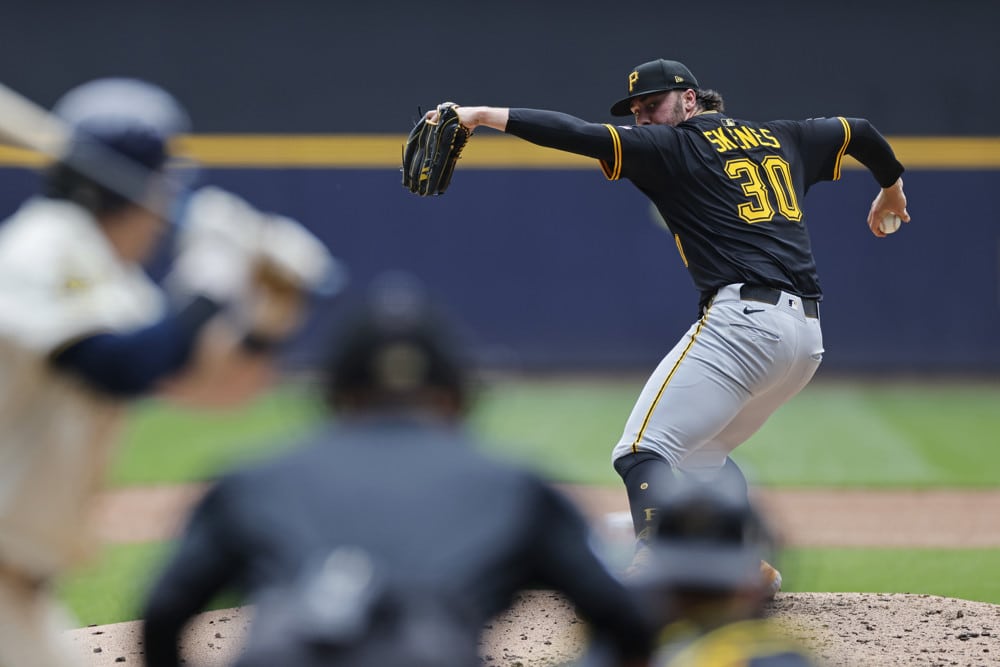The PGA Tour moves into its postseason. And this time, it’s a more exclusive playoff. The Top 70 players in the FedEx Cup standings head to Memphis, TN, for the 2023 FedEx St. Jude Championship at TPC Southwind. As always, here is a preview of the 2023 FedEx St. Jude Championship and a guide to betting the tournament.
2023 FedEx St. Jude Championship Preview
The Field
This year, only the Top 70 players in the FedEx Cup standings leading into the tournaments will play at East Lake for the first round of the playoffs. In prior years, this first event featured 125 golfers. In the opinion of the writer (and apologies to Lucas Glover), this is a huge improvement in the quality of the playoffs overall. Playoffs in any professional sport should be highly exclusive to the most successful players or teams that year. Reducing the field to 70 accomplishes this.
Even with fewer players, all the names you’d expect to play this week will make the trip to Memphis. Jon Rahm. Rory McIlroy. Scottie Scheffler. The cream of the PGA Tour crop will look to take down the first leg of the FedEx Cup playoffs.
It remains to be seen as of this writing if Justin Thomas will be joining everyone at TPC Southwind. Heading into the final round, Justin Thomas is right on the cut line toward qualifying for the FedEx Cup playoffs. He desperately needs to get inside the Top 70 as he still needs to demonstrate to Zach Johnson that he’d be a worthy Ryder Cup captain’s pick. If he does, he could continue to build momentum on a golf course where he’s won before.
For the full field, click here.
The Golf Course
The city of Memphis first hosted a PGA Tour stop in 1958, then known as the Memphis Open. It was played at Colonial Country Club. In 1969, legendary entertainer Danny Thomas struck a deal with the city to attach his St. Jude’s Children’s Hospital as the charitable beneficiary of the tournament, and the hospital has been attached to the event ever since. The tournament also found a permanent home at TPC Southwind in 1988, the site of this week’s event.
FedEx first came on as the title sponsor in 1986, and after a brief hiatus in the 2000s, it returned as the flagship sponsor in 2009. FedEx, obviously, has a very significant presence on the PGA Tour overall. It is the title sponsor of its playoffs and offers up millions and millions of dollars in prize money to the participants. Outside the players, FedEx probably has the most influence over the PGA Tour of anyone or any organization.
This tournament has evolved significantly over the last 10 years. Up until a few years ago, this tournament was played one week before the U.S. Open and struggled to attract big names. But as the PGA Tour’s biggest sponsor, FedEx wielded enough influence to steal the WGC mantra from the Bridgestone Invitational and move it to TPC Southwind in 2019. For the first time, FedEx’s title tournament was guaranteed to have all the biggest stars in golf.
But that wasn’t enough either. After COVID effectively killed the WGC tournaments, FedEx took the opportunity to create essentially a monopoly on one leg of the FedEx Cup playoffs. By claiming its title event in its hometown as the first leg of a postseason it sponsors, the St. Jude Championship is now a four-day commercial for FedEx. Mission accomplished for the C-Suite at 3610 Hacks Cross Road.
But FedEx wasn’t the only benefactor of this maneuvering around the PGA Tour schedule. This move was a huge benefit for the City of Memphis and the St. Jude Children’s Hospital. Now with its place in the PGA Tour’s playoffs, the biggest names are forced to show up for the tournament. That generates a lot more revenue for the City of Memphis as well as the Children’s Hospital itself.
As a golf course, it’s fine. Here’s a couple of highlight videos from last year’s FedEx St. Jude Championship to give you an idea of what the golf course looks like:
TPC Southwind opened in 1988 and was designed by Ron Prichard, with consultation from Fuzzy Zoeller and Hubert Green. And what you see at TPC Southwind isn’t much different than what’s seen at other TPC golf courses. While in immaculate condition, there’s nothing special about the land, the routing, or the shape of the holes.
Most holes feature narrow, tree-lined fairways with either a water hazard or a bunker in the landing zone. Many holes also feature dog legs that command for positional play off-the-tee. The greens have some interesting contours and shapes to allow for some decent pin positions. Those are heavily guarded by multiple greenside bunkers or more water. In all, 11 of 18 holes feature some sort of water hazard, either off the tee or on the approach shot.
With the numerous water hazards, this golf course can provide some excitement in the form of serious car crashes to shake up the leaderboard. But otherwise, TPC Southwind is a fairly average golf course that doesn’t excite the eyeballs. This golf course is essentially a test of who can hit the fairway and avoid the water. That’s it. Nothing more. Do that, and a player should find themselves in contention at the tournament.
Betting Strategies
Here is everything a gambler needs to know about the 2023 FedEx St. Jude Championship, how it has played, tested the players, and what attributes have been valued the most at TPC Southwind. This section previews what to expect at the 2023 Rocket Mortgage Classic.
General Information & Agronomy
TPC Southwind is 7,243 yards and plays to a Par 70. It’s a standard Par 70 layout. Twelve Par 4’s. Four Par 3’s. Two Par 5’s.
Par 3’s
These were the average yardages of every Par 3 at TPC Southwind at the 2022 FedEx St. Jude Championship, as well as their overall difficulty last year.
- Hole No. 4: Avg: 190.3, 9th easiest hole
- Played as 5th easiest hole in 3rd round in 2022 when moved up to 180 yards. 32% of the field recorded a birdie. Only 8 bogeys or worse that day
- Hole No. 8: Avg: 168.5, 4th easiest hole
- Despite being the 4th easiest, only about a quarter of the field birdied the hole in 2022.
- Hole No. 11: Avg: 148.8, 7th easiest hole
- Played well under par the first three rounds but was the 7th most difficult hole on Sunday.
- Hole No. 14: Avg. 200.0, 5th toughest hole
- Played over par every round in 2022 and was the second hardest hole in the first and fourth rounds.
Historically, the Par 3’s at TPC Southwind play on average at 174 yards. Of all golf courses played on the PGA Tour since 2015, TPC Southwind has the fourth shortest collection of Par 3’s. Of all active courses on the PGA Tour, only Pebble Beach features shorter Par 3’s.
Overall, the Par 3’s aren’t overly difficult either. Since 2015, they rank as the 25th most difficult Par 3’s on the PGA Tour. Of active golf courses on the schedule, they’re the 14th easiest. But three of the four Par 3’s are very, very benign. Only the Par 3 14th, which was the 5th toughest hole at the 2022 FedEx St. Jude Championship, presents any real teeth.
Hole No. 8 does not have any water hazards and is relatively defenseless in benign conditions. But Holes 4, 11, and 14 do feature water on the hole. In benign conditions, No. 11 is one of the easiest holes on the golf course. But as shown on Sunday, as the winds picked up, players can have significant trouble on the hole. And between the water on the right and the length of the hole, Holes No. 4 and No. 14 are certainly not easy.
Overall, however, these are some of the shortest and more routine Par 3’s on the PGA Tour.
Par 4’s
These are the yardage ranges of every Par 4 at TPC Southwind, per the 2022 FedEx St. Jude Championship:
- < 375 Yards: 0.0%
- 375-400 Yards: 18.8%
- 400-425 Yards: 16.7%
- 425-450 Yards: 18.8%
- 450-475 Yards: 22.9%
- 475+ Yards: 22.9%
Most of the length at TPC Southwind can be found in its Par 4’s. About 45% of the Par 4’s at TPC Southwind play more than 450 yards. Most of these longer Par 4’s can be found on Holes No. 5, 7, 13, and 17. They all played as the toughest, second toughest, 9th toughest, and 5th toughest holes on the golf course, respectively. Overall, seven of the 12 Par 4’s on the golf course played over par at the 2022 FedEx St. Jude Championship.
The defense of the Par 4’s is primarily narrow fairways, thick bermuda rough, bunkers in the landing zones, and dog legs. This can force players to club down, plod around and play positional golf. These features are most notably seen on Holes No. 1, 2, 5, 6, 10, and 15. Players typically club down off the tee to make sure they keep the ball in the fairway and in the middle of the dog leg.
Water is also a defense on the Par 4’s. Water is either in play off the tee or next to the green on Holes No. 9, 12, 15, and 18. While there is a water hazard on Hole No. 10, it takes a really, really stupid decision off the tee to bring it into play. Almost everyone clubs down on the hole to lay well short of the hazard.
Of all golf courses played on the PGA Tour since 2015, the Par 4’s at TPC Southwind rank slightly above average in terms of difficulty. Last year it ranked 15th most difficult out of the 38 golf courses played in the 2021-2022 PGA Tour season.
Par 5’s
There are only two Par 5’s at TPC Southwind. There are their yardages and their overall difficulty at the 2022 FedEx St. Jude Championship.
- Hole No. 3: 571, 562, 550, 578, 2nd Easiest Hole
- 42.7% of the field recorded a birdie or better on this hole, however, this percentage dropped to about 34% over the weekend. Roughly 10% of the field recorded a bogey or worse on the hole.
- There were only 7 eagles on the hole during the week.
- Hole No. 16: 515, 538, 539, 512, Easiest Hole
- 58.7% of the field recorded a birdie or better on this hole, including 71% and 65% in the first and final rounds, respectively. Only 5.3% of the field recorded a bogey or worse on the hole.
- There were 17 eagles on the hole during the week, 15 of which came over the first two rounds.
Hole No. 16 is essentially toothless. There are no bunkers or water to challenge players off the tee. As long as one finds the fairway, a birdie is very, very reasonable on the hole.
Hole No. 3 doesn’t feature a very challenging tee shot. However, water is in play should anyone miss their approach shot right. Players very often bail out left into one of the front greenside bunkers and attempt to get up and down for birdie from there.
It is absolutely vital to get birdies on these Par 5’s during the week. They’re extremely manageable. Coming away with only a par on both holes in a round will lose a player between 0.8 to a full stroke to the field.
Agronomy
The greens at TPC Southwind consist of Champion Bermuda. The rough is also bermuda and is cut to a length of 2.5″. Bermuda rough of that length can cause 50/50 probabilities on if a player will get a good lie out of it or not.
While targeting general putting on bermuda greens is acceptable, some gamblers like to drill down on the specific strain of bermuda for comparable putting performances. Here is a sample of golf courses that specifically feature Champion Bermuda greens (note – only greens that are not overseeded for tournament play are included in this list):
- Sedgefield Country Club (Wyndham Championship)
- Congaree Golf Club (CJ Cup & Palmetto Championship)
- Country Club of Jackson (Sanderson Farms Championship)
- Quail Hollow (excluding Wells Fargo Championships at the golf course)
However, the fairways are zoysia. Zoysia is a fairly spongey grass, and the ball can sit up a bit on it, almost like hitting off a tee. It’s a common turfgrass used in warm and humid climates like the Southern United States or in Asia. It also requires less water than other common golf course grasses. Some players like hitting off of Zoysia. Some find it weird, especially players who hit down on the ball a lot.
Recent and current golf courses on the PGA Tour that featured Zoysia fairways are the following:
- TPC Craig Ranch (Byron Nelson)
- Trinity Forest (Byron Nelson)
- Bellerive Country Club (2018 PGA Championship)
- East Lake Golf Club (Tour Championship)
- Kasumigaseki Country Club (2021 Olympics)
Because of its sponge-like nature, zoysia fairways often run pretty slow once the ball hits the turf. As such, don’t expect much rollout on the ball once it lands on the ground.
Golfer Skillsets
Here is how TPC Southwind challenges players in each of the four skillets of golf:
Off The Tee
Off all golf courses played on the PGA Tour since 2015, TPC Southwind ranks 42nd in difficulty off the tee. It’s essentially an average golf course off the tee in terms of difficulty on the PGA Tour.
Much is made about the penal nature of TPC Southwind when fairways are missed. And the statistics do warrant the attention. 4.4% of all missed fairways at TPC Southwind incur a penalty stroke of some sort. Of all golf courses played on the PGA Tour since 2015, that’s the 33rd highest rate of penalty shots incurred from missed fairways.
In addition, there’s a 0.35 stroke difference in the score of a hole from tee shots that find the fairway and ones that find the rough. Of all golf courses played on the PGA Tour since 2015, that’s the 14th highest penalty for hitting a tee shot into the rough. And because TPC Southwind features less than 30 yard wide fairways (15th narrowest on PGA Tour since 2015), the historical driving accuracy rate at the golf course is only 56.3% since 2015.
So with all this adversity, why is it about the middle of the road in terms of difficulty? It’s probably because executing a good tee shot itself isn’t difficult. TPC Southwind is an execution test off the tee. Can you avoid the water? Can you hit it into the middle of the dog leg? There’s not a lot of situations where good tee shots can still find trouble.
Where players get into trouble is through user error. But if a player is hitting it well off the tee that day, finding fairways isn’t difficult. Everything is mostly straight out in front of the players. In a nutshell, the penalty for missing in a water hazard or rough is offset by the relatively straight forward nature of each tee shot at TPC Southwind. While there’s adversity all around, good tee shots are not impossible.
Another interesting development at TPC Southwind is how better fields may have changed the way players attack it. Stronger fields have brought better drivers of the golf ball to TPC Southwind. And since TPC Southwind earned its WGC label (and later its place in the playoffs), the average driving distances relative to other golf courses on the PGA Tour has increased.
For example, from 2015-2018 TPC Southwind ranked no higher than 24th out of 37 golf courses in driving distance of all tee shots that season, with a low rank of 34th out 38 in 2015. However, the last four years with a stronger field has resulted in rankings of 22nd/35, 12th/29, 24th/40 and 15th/38. In two of the last four years, TPC Southwind featured above average driving distances on all tee shots relative to other PGA Tour venues.
It might suggest that players are being a little more aggressive off the tee at TPC Southwind. Better players usually possess more length than average ones, and they might be able to carry over doglegs and hazards easier than others who have to club down and attack a hole in a different way.
This might not be breaking news when looking at the types of players who have won at TPC Southwind over the last 10 years. Dustin Johnson is a two time winner at TPC Southwind. Brooks Koepka outdueled Rory McIlroy in 2019. Will Zalatoris secured his first win on the PGA Tour in 2022. All of these players are strong and long players off the tee.
While the likes of Daniel Berger and Abraham Ancer also have seen lots of success at TPC Southwind, there is certainly a pathway for elite (and occasionally inaccurate) drivers like the players listed above from winning at the golf course.
Approach Play
Of all golf courses played on the PGA Tour since 2015, TPC Southwind ranks as the 30th most difficult golf course in terms of approach shots. It possesses above average difficulty overall. Since 2015, the average green in regulation rate is only 60% (22nd lowest on the PGA Tour). While shots under 150 yards aren’t all that difficult, TPC Southwind features the 20th most difficult approach shots from over 150 yards since 2015.
There are a few reasons why TPC Southwind features difficult approach shots, especially for longer ones. For starters, the average green size at TPC Southwind is only 4,300 square feet. That’s significantly smaller than the average PGA Tour venue. Off the jump, players are hitting into smaller targets even from the fairway.
Second, the low driving accuracy rates means players struggle to get either solid contact or ball flight control on shots out of the bermuda rough. Players may find themselves with a buried lie that makes it difficult to keep the clubface square and get the ball first contact. Or they might find themselves with a flyer lie to kill any spin on it.
Third, there are several holes with a water hazard greenside. Eight of 18 holes feature a water hazard greenside. This reduces the amount of leeway players have for misses. This helps explain why TPC Southwind features the 12th highest rate of penalty strokes incurred on all shots since 2015.
Like the tee shots, however, there are counter forces that do make approach shots easier. For starters, the zoysia grass is a fantastic surface to hit approach shots from. The ball sits up on it, almost like it’s on a tee. And with hot and humid conditions in Memphis (along with the 15 inches of rain Memphis had in July), TPC Southwind can turn into a dartboard for players hitting approach shots from the fairway at a high frequency.
Next, here is the approach shot distribution chart from TPC Southwind at the 2022 FedEx St. Jude Championship. This will help preview the types of approach shots players will hit from at the 2023 FedEx St. Jude Championship:
Distribution charts like this are very ideal. This tournament yields a strongly correlated trend of consecutive ranges in which a higher frequency of shots are hit from. TPC Southwind is a test of how well one hits their approach shots from 100-200 yards. While a 100 yard range is big, the fact there are above average shots from all 25 yard buckets from 100-200 yards means that all players in the field, long and short, will hit their approach shots from this very defined range.
It’s much easier to handicap a field of diverse players when an approach shot distribution chart looks like this and isn’t all over the map like at some other venues.
Around The Green
Of all golf courses on the PGA Tour since 2015, TPC Southwind ranks as the 43rd most difficult around the green. Once again, TPC Southwind has about average difficulty in this area. Since 2015, it ranks 37th in difficulty around the green from the fairway, 44th in difficulty from the rough, and 66th in difficulty out of a greenside bunker.
As mentioned earlier, the biggest challenge around the green at TPC Southwind comes in the form of water hazards. But otherwise, getting up and down from the bunkers isn’t very challenging for a PGA Tour pro. Nor is it tremendously difficult from the rough. It does possess above average difficulty scrambling from the fairway, probably because of the bermuda grass around the collars and aprons.
Last week saw players struggle significantly getting up and down from off a green at Sedgefield Country Club because of how severely the greens were contoured and how fast they were running. That’s not the case at TPC Southwind. The undulation of the green is much more subtle than at Sedgefield, even with the same agronomy and similar green speeds.
Putting
Of all golf courses on the PGA Tour since 2015, TPC Southwind ranks as the 68th most difficult golf course for putting. It has not challenged the professionals on the greens. It ranks as the 26th easiest on putts under 5 feet, 17th easiest on putts from 5 to 15 feet, and 21st easiest on putts over 15 feet.
Once again, the more subtle undulations of the greens at TPC Southwind and its slower speeds make putting on it much easier than what players saw last week at Sedgefield Country Club, despite the exact same agronomy. However, players who typically putt well on bermuda are the ones to favor this week. Several recent winners like Justin Thomas, Brooks Koepka, Daniel Berger, and Dustin Johnson have lots of success and experience on bermuda.
Predictive Skillsets
Here is the predictive skillset chart that shows the types of players that typically do well at TPC Southwind:
TPC Southwind isn’t easily predicted based on off-the-tee profiles. There is a very low correlation of successful players at the golf course based on driving distance, either long or short. In terms of the skill of driving accuracy, it’s on par with the average PGA Tour venue. However, predicting tournaments based on driving accuracy performance is one of the weakest predictors when gambling on golf.
This makes sense based on recent tournaments. A great example of this is the 2021 playoff between Sam Burns, Hideki Matsuyama, and Abraham Ancer. Ancer, a very short hitter, was triumphant in the playoff over Hideki Matsuyama (who possessed above average length at the time) and Sam Burns (a very long hitter on the PGA Tour). In addition, Harris English (a player with average length) and Bryson DeChambeau (the longest hitter in the game at the time) were also in the mix.
The goal is very simple at TPC Southwind – keep the ball in the fairway off the tee. Whatever measure a player takes to accomplish this goal, whether it be via the driver or clubbing down off the tee, is up to them.
By far, the most predictive skillset for TPC Southwind is iron play. Great iron players generally do very well at TPC Southwind. Because of how heavy a concentration of shots are between 100-200 yards, premium ball strikers with the short to mid irons tend to do best at TPC Southwind.
Putting and around the green skillsets also are slightly more predictive at TPC Southwind than the average PGA Tour golf course. Don’t get carried away with either stats, however. Neither category is a great predictor of the final outcome of a tournament overall. Break ties with them, especially between a player who excels on bermuda surfaces and those who don’t.
In Tournament Strokes Gained
Lastly, here is a distribution chart of the variance in total strokes gained based on in tournament performance. This chart demonstrates what forces have an influence on how a player separates themselves from the field:
Note – this chart captures all history from the FedEx St. Jude Classic. However, upon examination of results from the WGC FedEx St. Jude and the FedEx St. Jude Championship, this chart is a good representation of how those tournaments played out as well.
By far, players can separate themselves from the field much more than the average PGA Tour venue with their approach play. Iron play at TPC Southwind carries way more weight in influencing the variance in total strokes gained in tournament than it does at other PGA Tour events. And because iron play is such a strong predictor of success before the tournament, iron play should be the first thing gamblers look at this week, especially performances between 100-200 yards.
Off the tee performance also carries a little more weight toward the variance in total strokes gained at TPC Southwind than it does at other places. However, accuracy off the tee is much, much more influential both towards Strokes Gained – Off-the-Tee and total strokes gained than both driving distance, and it plays a much heavier influence at this golf course than it does at the typical PGA Tour stop.
Executive Summary
So what are the main takeaways from this preview of the 2023 FedEx St. Jude Championship? Here are the main points to focus on for the 2023 FedEx St. Jude Championship:
1. TPC Southwind is a Par 70 with Zoysia fairways, bermuda rough, and bermuda greens.
2. Eight of 18 greens at TPC Southwind feature water greenside.
3. The narrow and penal nature of TPC Southwind makes it very important to keep tee shots in the fairway, especially on the Par 4’s. However, both bombers and short accurate players have found success at the golf course.
4. Good iron play, both heading in and in tournament, is absolutely vital to success at TPC Southwind, especially from 100-200 yards.
5. Neither the greens nor greenside surrounds have posed that much of a challenge to the PGA Tour professionals. Combined, both areas feature some of the least challenging conditions the PGA Tour professionals will see all year.



























